Congaree National Park South Carolina: 1st Time Visitor Guide
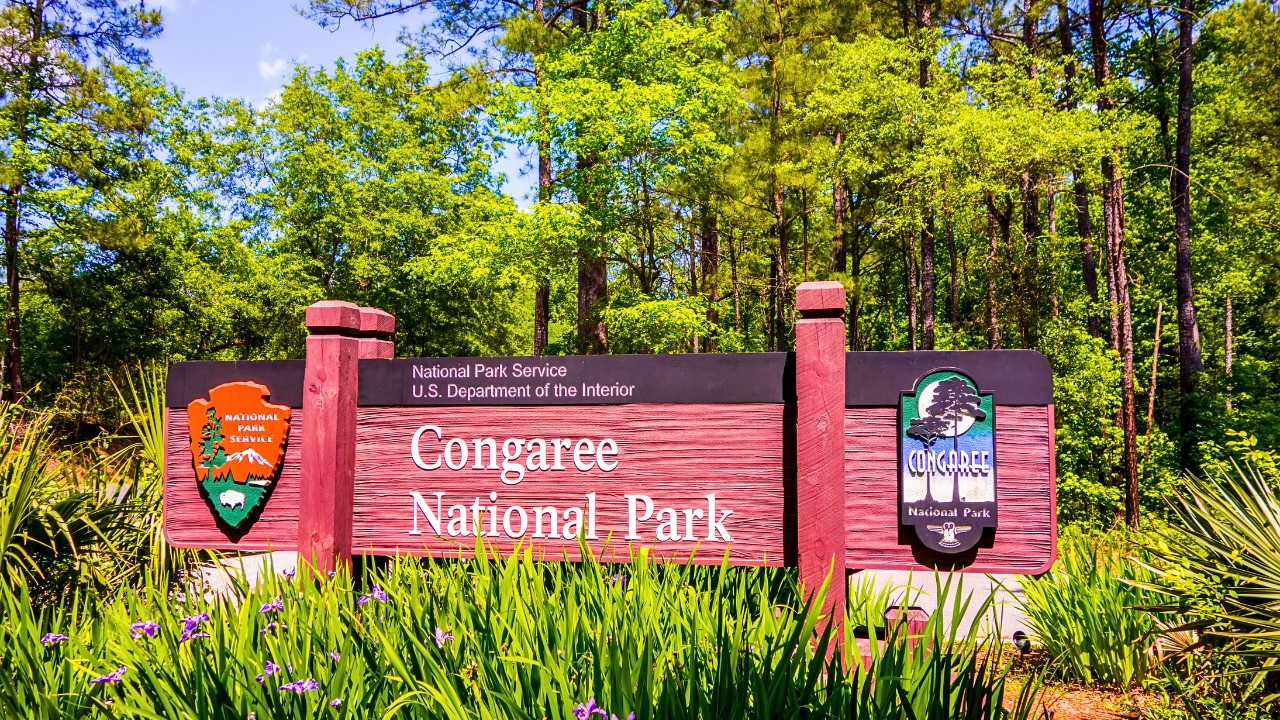
Congaree National Park is one of the most underrated parks in the south of the US. This is a hidden sanctuary of ancient trees, winding waterways, and lush floodplains. Unlike mountainous or desert parks, Congaree offers a unique experience defined by towering bald cypress trees, the stillness of swampy landscapes, and rich biodiversity. For first-time visitors, this park delivers a peaceful and immersive nature escape perfect for hiking, paddling, and birdwatching.
Overview
Congaree National Park protects the largest intact expanse of old-growth bottomland hardwood forest in the southeastern United States. This national park is home to some of the tallest trees in the East, the park features scenic boardwalk trails, kayaking routes through Cedar Creek, and a rich ecosystem of wildlife including barred owls, river otters, and even the occasional alligator. Whether you’re here for a short walk or a multi-day backcountry experience, Congaree feels like stepping into a primeval world.
Photos:

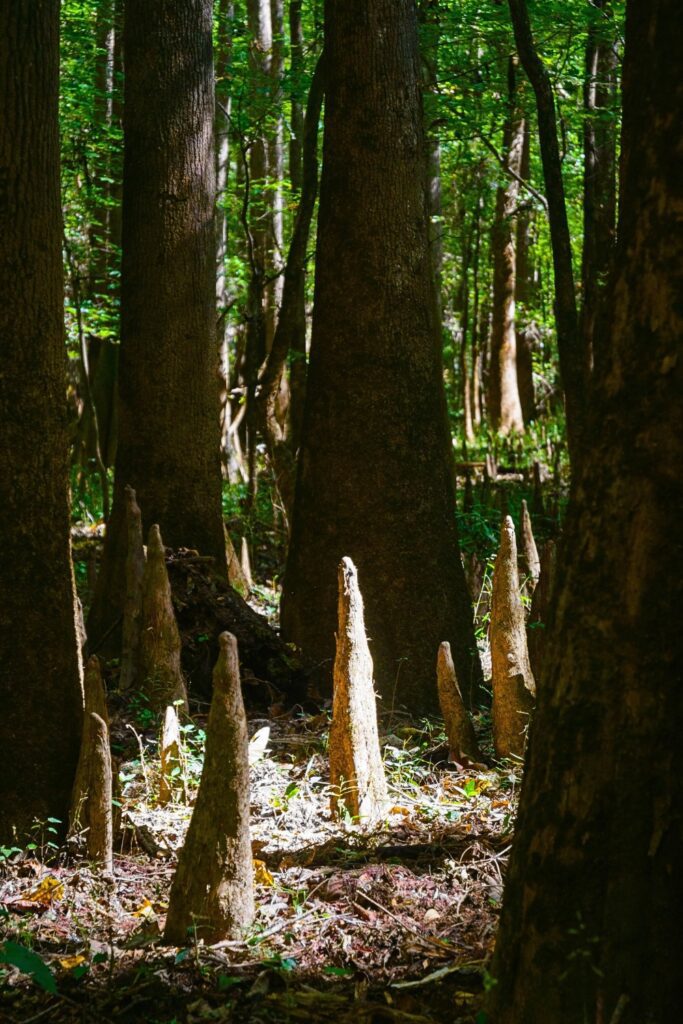
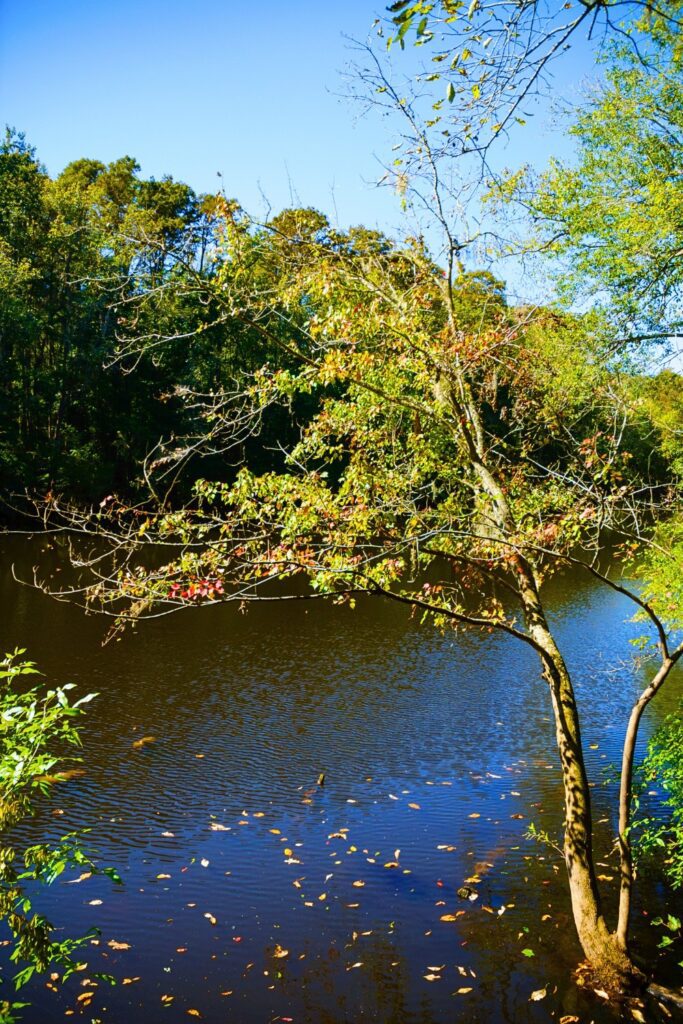
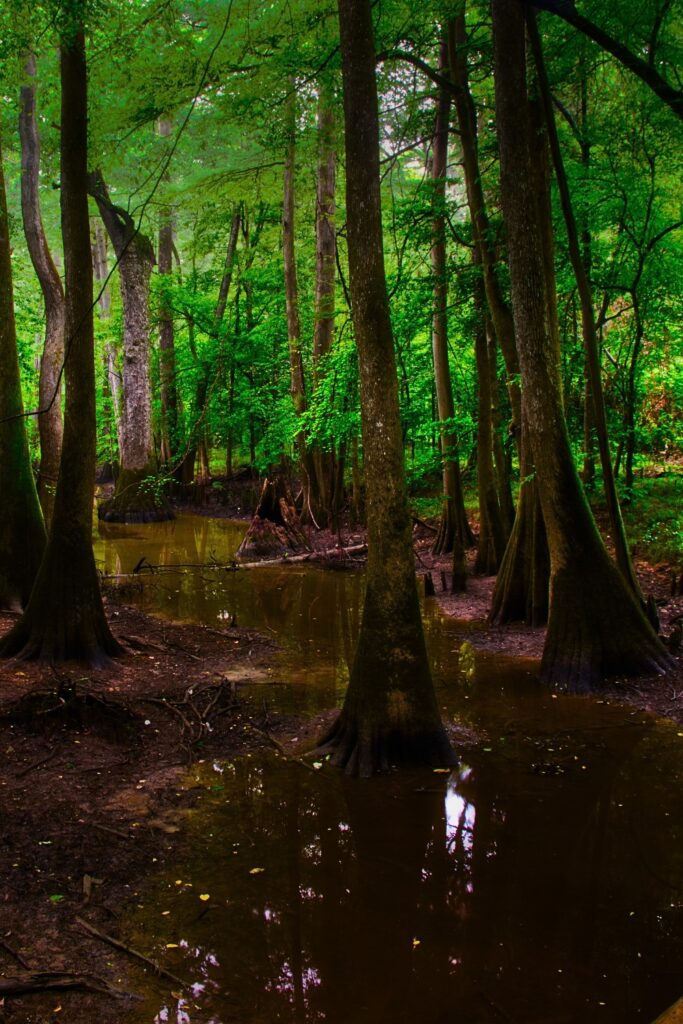

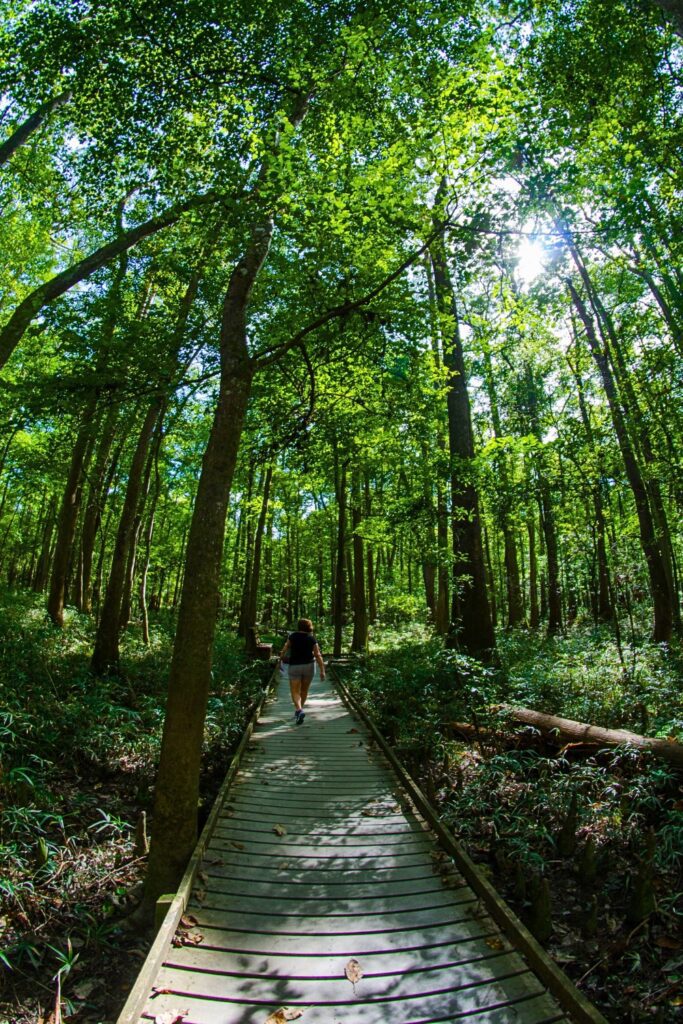
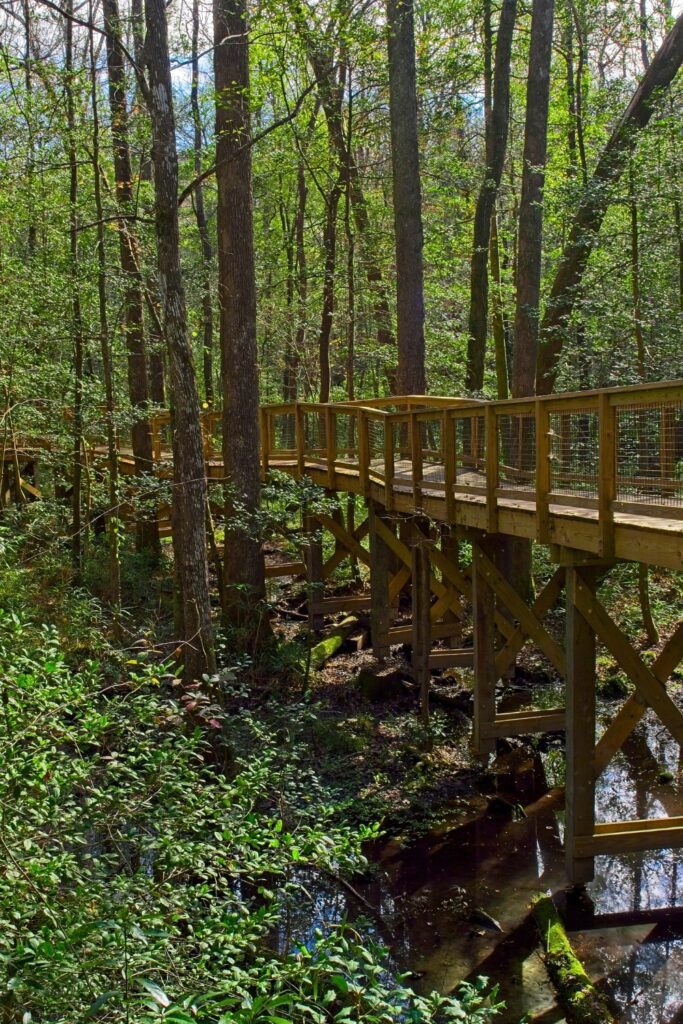
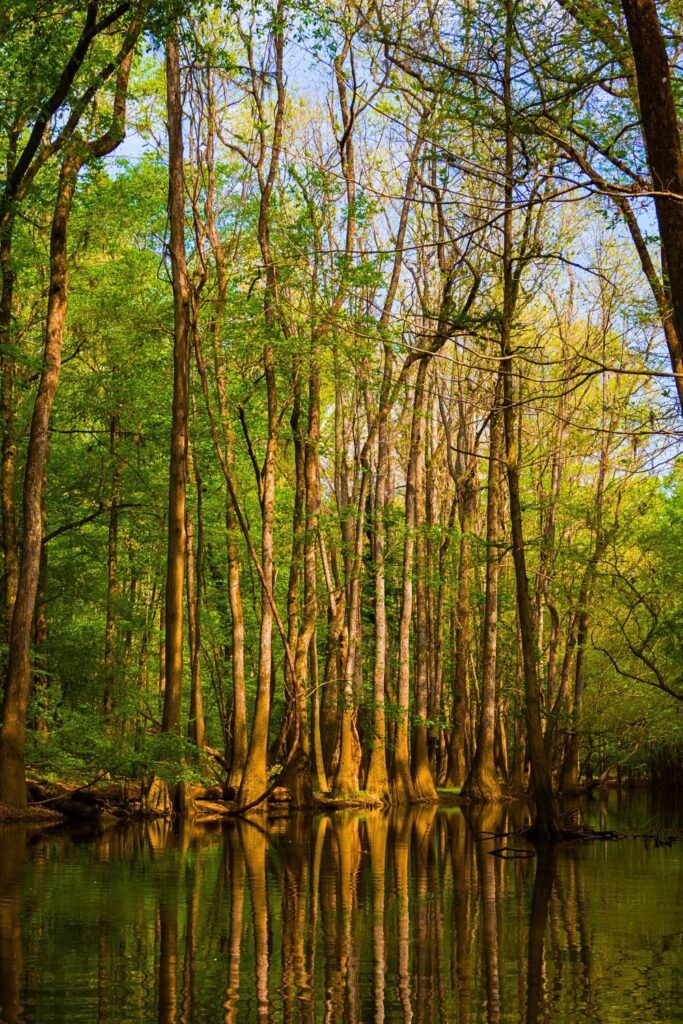

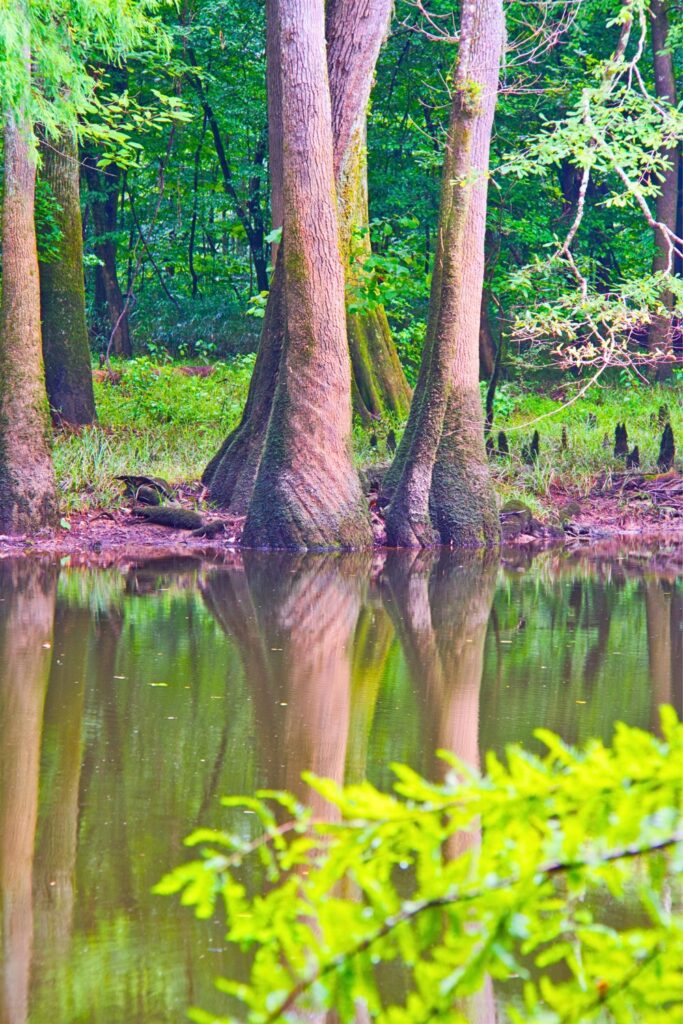
How to Get There
By Car:
-
From Columbia, SC: Congaree is about 30 minutes southeast. Take I-77 to SC-48 East (Bluff Road), then follow signs to the park entrance.
-
From Charleston, SC: About 2 hours northwest via I-26 W.
-
From Charlotte, NC: Around 1.5–2 hours south via I-77.
By Air:
The closest airport is Columbia Metropolitan Airport (CAE). From there, it’s a 40-minute drive to the park.
Best Times to Visit
-
Spring (March–May): Ideal weather, high water levels for kayaking, and fewer bugs than in summer.
-
Fall (October–November): Stunning fall foliage and cooler temperatures.
-
Winter: Great for hiking with fewer crowds and minimal insects.
-
Avoid Summer (June–August) if you’re sensitive to heat, humidity, and mosquitoes.
Plan a trip
10 Best Things to Do
-
Walk the Boardwalk Loop Trail – The park’s iconic 2.6-mile elevated trail takes you through old-growth forest and swamplands.
-
Kayak Cedar Creek – Paddle through still waters surrounded by towering cypress and tupelo trees.
-
Join a Ranger Program – Learn about the park’s ecology, wildlife, and history.
-
Camp Under the Stars – Reserve a site at the Longleaf Campground or brave the backcountry.
-
Go Birdwatching – Spot prothonotary warblers, woodpeckers, and owls.
-
Watch Fireflies (late May to early June) – Witness the synchronized firefly display, a magical annual event.
-
Fish in Cedar Creek – Bass and catfish are common here.
-
Take a Night Hike – Stargazing and nocturnal wildlife sightings make this a unique experience.
-
Picnic at Harry Hampton Visitor Center – Enjoy a peaceful lunch surrounded by nature.
-
Explore Weston Lake Loop – A longer trail with a blend of boardwalk and dirt paths through remote forest.
- Bonus: See top recommendations from visitors
Best Hikes (Beginner to Advanced)
Beginner:
-
Boardwalk Loop Trail (2.6 miles, easy): Flat and accessible, perfect for first-timers.
-
Bluff Trail (1.7 miles, easy): A peaceful walk through pine uplands.
Moderate:
-
Weston Lake Loop Trail (4.4 miles): Includes parts of the boardwalk and passes scenic oxbow lakes.
-
Oakridge Trail (6.6 miles): Slightly longer with excellent opportunities for wildlife viewing.
Advanced:
-
Kingsnake Trail (11.7 miles): Remote, wild, and ideal for experienced hikers and birders.
-
Bates Ferry Trail (2 miles one way): Short but less traveled and often flooded—great for solitude seekers.
4 Hidden Gems in Congaree National Park
-
Firefly Synchronization (late May–early June): A rare natural phenomenon where fireflies blink in unison.
-
Wise Lake: A remote backcountry area accessible by trail for a serene, off-grid escape.
-
Confluence of Cedar Creek and Congaree River: Best reached by kayak; it’s a scenic, quiet spot for wildlife and reflection.
-
Backcountry Hammock Camping: Free permits allow for a truly immersive overnight in pristine nature.
1–5 Day Sample Itinerary
Day 1:
-
Arrive and stop at the Harry Hampton Visitor Center
-
Hike the Boardwalk Loop Trail
-
Picnic at the visitor center
Day 2:
-
Kayak Cedar Creek (half-day paddle)
-
Birdwatch near Weston Lake
-
Stay overnight at Longleaf Campground
Day 3:
-
Hike Weston Lake Loop Trail
-
Attend a ranger-led program
-
Sunset photography at the Bluff Trail
Day 4:
-
Explore Kingsnake Trail (for longer hikes)
-
Visit hidden spots like Wise Lake
-
Camp or drive to nearby lodging
Day 5:
-
Enjoy a quiet morning stroll on Bluff Trail
-
Visit Congaree River overlook
-
Drive back with scenic stops along Bluff Road
Packing List
- My Amazon gear list
-
Bug spray (essential year-round, especially spring–summer)
-
Waterproof hiking boots
-
Light layers and rain gear
-
Snacks/lunch (limited services inside the park)
-
Headlamp/flashlight (especially for camping)
-
Binoculars (birding and wildlife)
-
Kayak or canoe gear (or rent nearby)
-
Map and compass for backcountry trails
-
Plenty of water (no refill stations deep in the park)
Where to Stay
Best hotels near Congaree National Park
Things to Know Before You Go
-
Admission is free – There are no entry fees at Congaree.
-
Flooding is common – Check trail conditions before you hike.
-
No gas or food in the park – Fill up before arriving.
-
Ticks and mosquitoes are abundant so come prepared.
-
Cell service is limited in parts of the park.
-
Kayak rentals are available through local outfitters outside the park (see best options).
Similar Sights:
Final Thoughts
Congaree National Park offers a quiet, deeply immersive experience that’s often overlooked in favor of flashier parks. But for those who seek stillness, massive trees, and swampy serenity, it’s a treasure trove of discovery and a must for anyone brainstorming South Carolina road trip ideas! Whether you’re hiking under towering canopies or gliding across reflective waterways, Congaree promises a soulful escape into one of nature’s best kept secrets.
